Suit up like a pro, even if you’re just getting started. Personal Protective Equipment (PPE) keeps you in the game. A well-dressed welder is a safe welder.
Did you know that 90% of all workplace eye injuries are preventable with the use of proper safety eyewear? Or that wearing gloves reduces hand injury by 60 percent? This comprehensive checklist covers every essential piece of protective gear you need to weld safely and confidently.
Welding exposes you to extreme temperatures, intense UV radiation, toxic fumes, and electrical hazards. Without proper protection, you risk burns, vision damage, respiratory illness, and even electrocution. But with the proper PPE, you can transform these dangers into manageable risks while focusing on creating quality welds.
Essential Head and Eye Protection
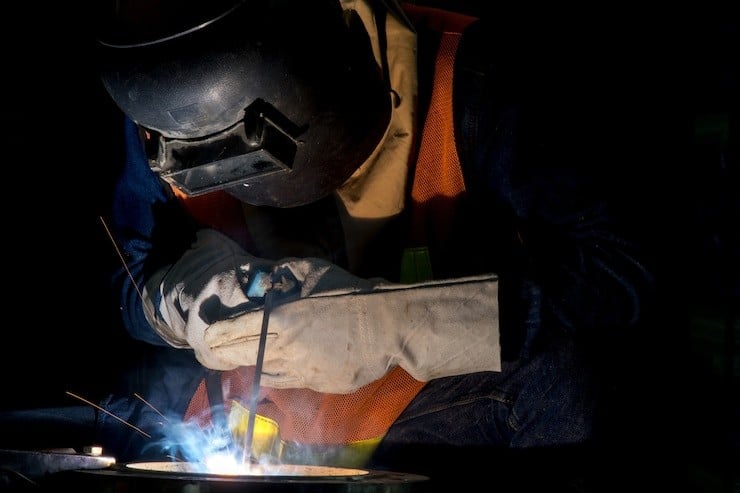
Welding Helmets: Your First Line of Defense
You can’t weld without a welding helmet. This essential head protection equipment protects the worker’s eyes, face, and neck while also providing a shield against UV radiation. Modern welding helmets offer features that make them safer and more convenient than ever.
Auto-Darkening vs Fixed Shade Helmets:
- Auto-darkening helmets: Automatically adjust lens darkness when welding begins, allowing better visibility for setup.
- Fixed shade helmets: More affordable option with consistent protection level.
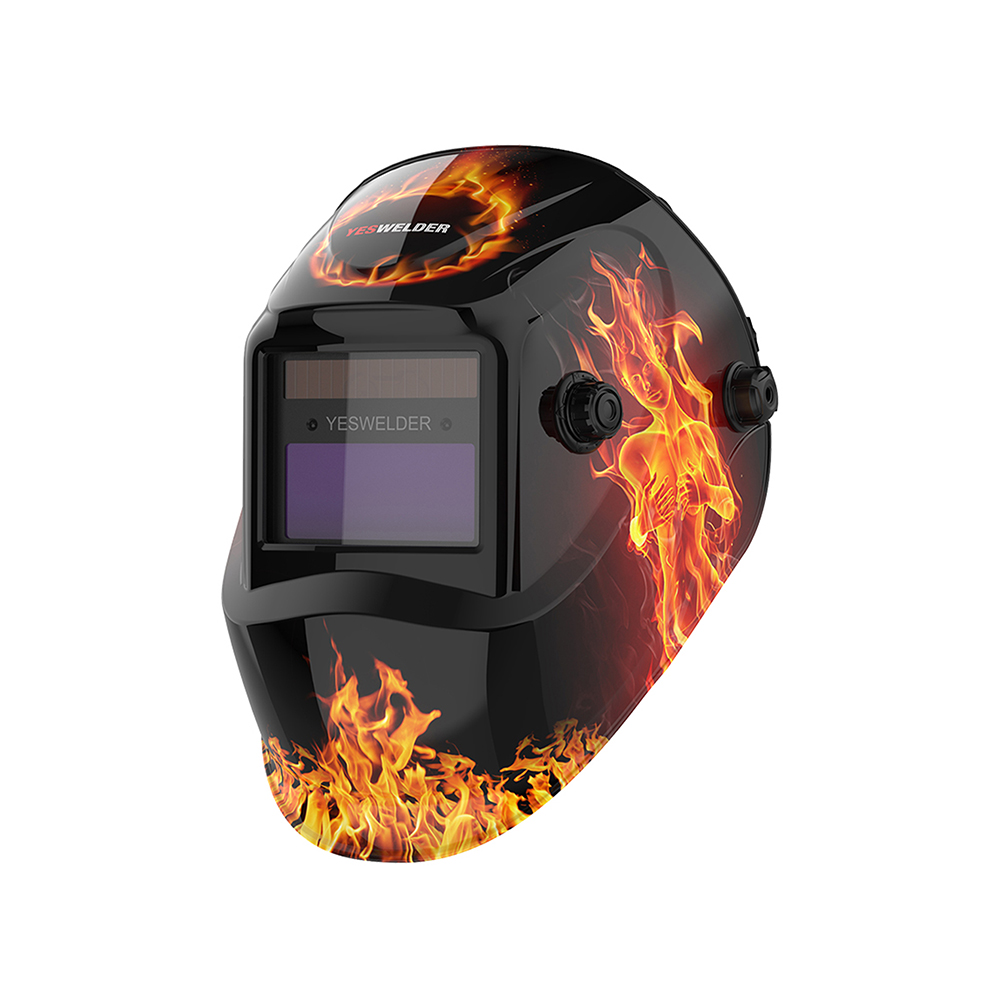
Proper Shade Selection: For Arc welding, the correct filter shade is selected according to the welding process, wire diameter for MIG welding wire, and operating current. Choose shade numbers based on your welding process:
- MIG welding: Shade 10-13
- TIG welding: Shade 8-13
- Stick welding: Shade 10-14
- Oxy-fuel cutting: Shade 3-8
Safety Glasses: Double Protection Strategy
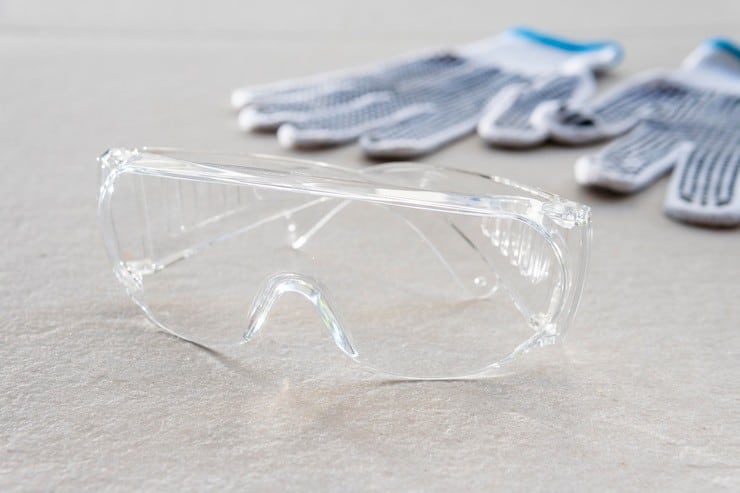
Yes, wear safety glasses even when wearing a helmet. Safety glasses with side shields, or goggles, should always be worn to protect your eyes from flying particles. This dual protection is crucial for grinding, cleaning, and setup work.
Essential Features:
- ANSI Z87.1 compliance for impact resistance.
- Side shields for comprehensive coverage.
- Clear polycarbonate lenses for durability.
- Comfortable fit for extended wear.
Welding Caps and Hoods
Protect your scalp and hair from sparks and spatter with flame-resistant headwear. A welder’s cap should be worn to protect the head from hot metal and slag splatter. In addition, long hair should be tied back and tucked inside the welding jacket.
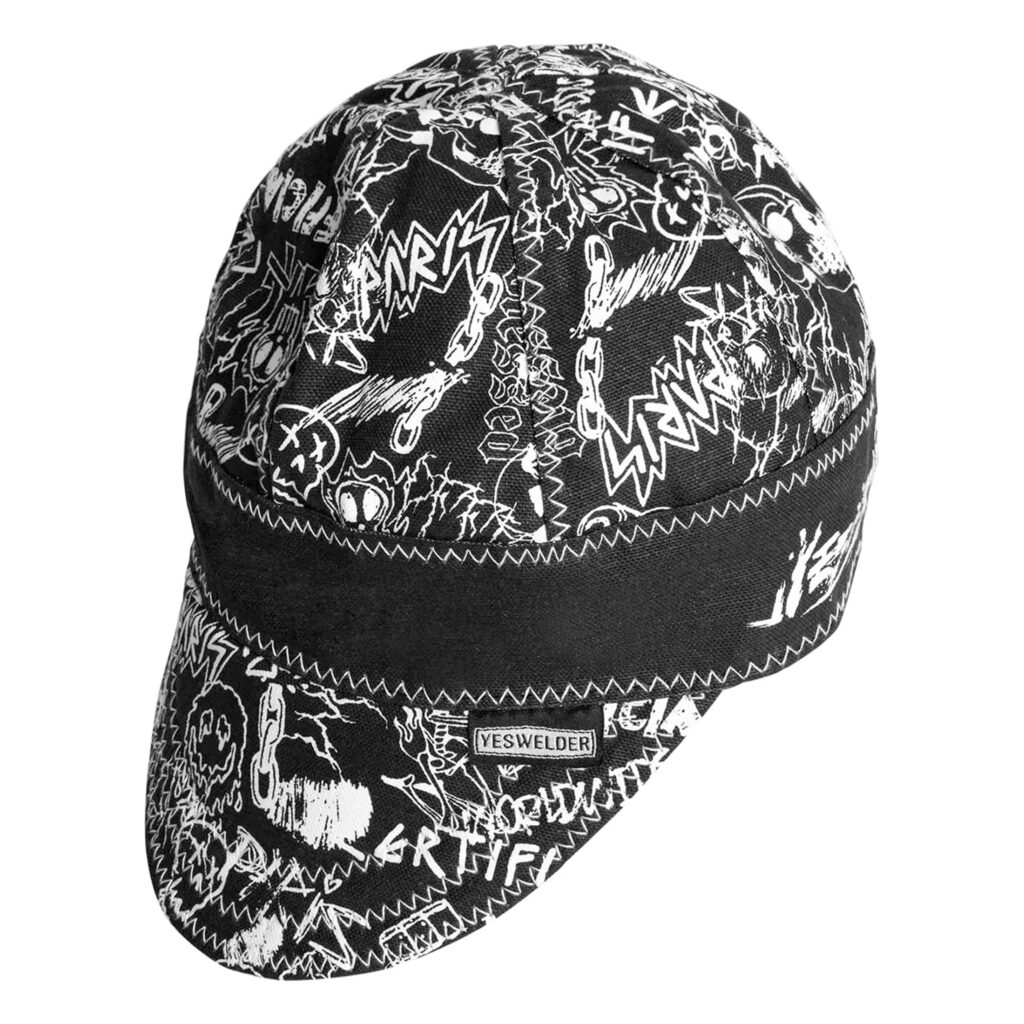
Hand and Arm Protection
Welding Gloves: Balancing Protection and Dexterity
Welding gloves are designed to protect your hands from heat, sparks, and spatter. They are made of heavy-duty materials and come in different types, including MIG gloves, TIG gloves, and stick welding gloves.
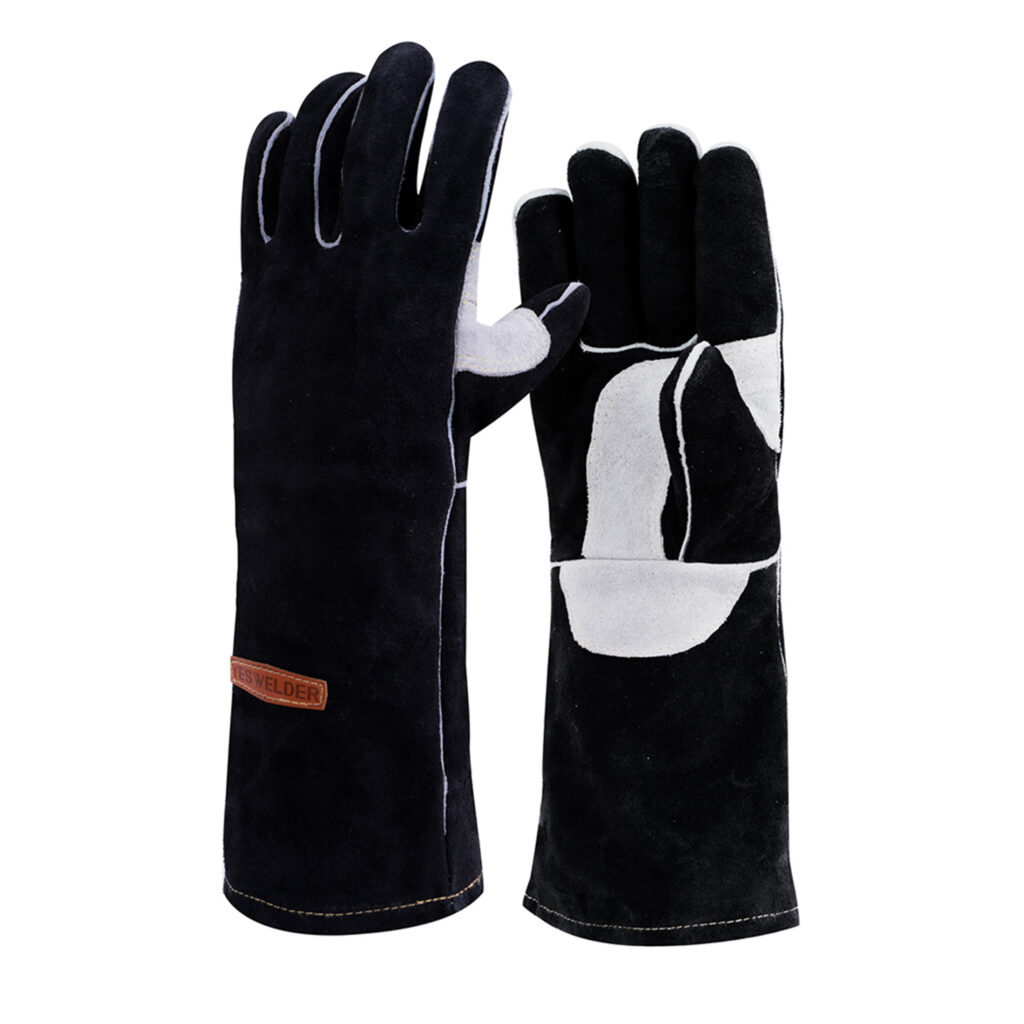
Glove Types by Welding Process:
- TIG welding: Thin, flexible goatskin or deerskin for precision work.
- MIG welding: Medium-weight cowhide for balanced protection and dexterity.
- Stick welding: Heavy-duty leather for maximum heat resistance.
Key Selection Criteria:
- Select a heat resistance rating that matches your welding amperage.
- Proper fit, snug but not restrictive.
- Reinforced palms and fingertips for durability.
- Gauntlet-style cuffs for forearm protection.
Proper Glove Maintenance
Regular inspection ensures your gloves provide reliable protection. Any signs of wear and tear can compromise safety and should be addressed immediately, usually by replacing the gloves. Check for holes, cracking, or worn spots before each use.
Body Protection and Clothing

Flame-Resistant Clothing Requirements
Wear tightly woven work-weight fabrics to keep UV radiation from reaching your skin. Button up your shirt to protect the skin on the throat and neck. Wear long sleeves and pant legs.
Essential Clothing Items:
- Welding jackets: Leather or flame-resistant cotton for upper body protection.
- Welding aprons: The best welding aprons should be made from sturdy materials like cowhide or pig skin. A plastic or polyester apron should never be used or worn when welding since it could melt into the welder’s skin.
- Long pants: Natural fiber materials without cuffs to prevent spark trapping.
- Closed-toe footwear: Leather work boots with steel toes are recommended.
Fabric Material Guidelines
Safe Materials:
- Natural cotton (preferred for comfort and breathability).
- Wool (excellent flame resistance).
- Leather (maximum protection for high-heat applications).
- Flame-resistant treated fabrics.
Materials to Avoid: Do not wear clothing made from synthetic or synthetic blends. The synthetic fabric can burn vigorously, melt and produce bad skin burns. Never wear polyester, nylon, or other synthetic materials that can melt.
Respiratory Protection
Understanding Welding Fume Hazards
Welding fumes can be hazardous to a person’s health. This is why respiratory protection is also necessary during welding operations. Different welding processes and materials create various toxic fumes that require appropriate filtration.
Respirator Types and Selection
Half-Face Respirators:
- P100 filters for particulate protection.
- Suitable for most general welding applications.
- Lightweight and comfortable for extended use.
Powered Air Purifying Respirators (PAPR): Powered respirators are most often used for professional welders and provide the most safety as they force filtered air through the system to aid in breathing.
- Superior protection for high-exposure environments.
- Reduces breathing resistance.
- Often integrated with welding helmets.
When Respiratory Protection is Critical
- Welding stainless steel (hexavalent chromium exposure).
- Working in confined spaces.
- Welding painted or galvanized materials.
- Extended welding sessions.
- Poor ventilation conditions.
Hearing Protection

Noise Hazards in Welding
Many noise-generating devices in the welding laboratory can damage your hearing, and there are circumstances in which debris can penetrate the ear canal. Plasma cutting, grinding, and air arc gouging can produce dangerous noise levels.
Protection Options:
- Disposable foam earplugs: 25-33 dB noise reduction.
- Reusable silicone plugs: Washable and more comfortable.
- Earmuffs: Higher protection levels for extremely loud environments.
Professional vs Hobbyist PPE Considerations
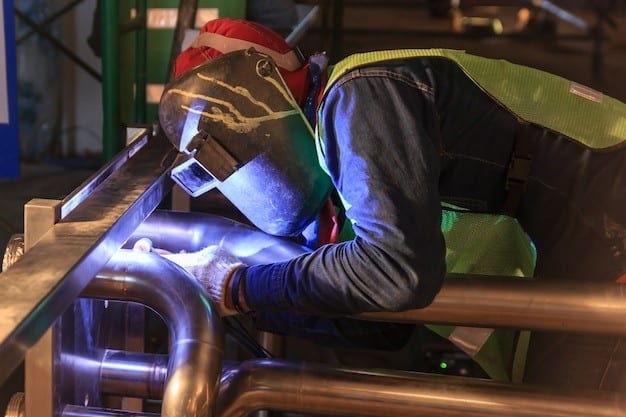
Professional Welder Requirements
Professional welders face additional considerations due to regulatory compliance and extended exposure:
Enhanced Protection Needs:
- OSHA-compliant PPE meeting specific industry standards.
- More frequent PPE replacement due to daily wear.
- Specialized equipment for confined space or outdoor work.
- Documentation and training requirements.
Professional-Grade Features:
- Higher heat resistance ratings.
- Extended warranty and durability.
- Certified protection levels.
- Ergonomic design for all-day comfort.
Hobbyist Welder Essentials
Whether you’re a professional welder or engage in welding for hobbyist projects, YesWelder wholesale has all the equipment you need to protect yourself against the inherent risks of welding.
Budget-Conscious Priorities:
- Essential safety features without premium costs.
- Multi-purpose equipment that works across different projects.
- Basic protection that meets safety standards.
- Gradually building a complete PPE collection.
Smart Hobbyist Choices:
- Auto-darkening helmet with basic shade range.
- General-purpose welding gloves.
- Cotton welding jacket for versatility.
- Standard safety glasses and respirator.
PPE Maintenance and Care
Regular Inspection Schedule
Proper maintenance and care of welding PPE are essential to ensure maximum protection and longevity. Establish a routine inspection process:
Daily Checks:
- Helmet lens for cracks or scratches.
- Glove integrity and flexibility.
- Clothing for holes or damage.
- Respirator filter condition.
Weekly Maintenance:
- Deep cleaning of helmets and safety glasses.
- Glove conditioning if using leather.
- Clothing washing according to manufacturer instructions.
- Respirator component replacement as needed.
Storage Best Practices
Store PPE in a cool, dry place away from direct sunlight and chemicals. Proper storage extends equipment life and maintains protective properties:
- Helmet storage in protective cases.
- Gloves stored flat to prevent cracking.
- Clothing hung properly to maintain shape.
- Respirators stored in clean, sealed containers.
Quick Reference PPE Checklist
Essential Items (Required for All Welding)
- Auto-darkening or fixed shade welding helmet.
- Safety glasses with side shields.
- Welding gloves appropriate for process.
- Long-sleeve shirt and long pants (natural fiber).
- Closed-toe leather footwear.
- Welding cap or hood.
Process-Specific Additions
- Respirator (for confined spaces, stainless steel, coated materials).
- Welding jacket or apron (high-amperage work).
- Hearing protection (grinding, plasma cutting).
- Heat-reflective clothing (extensive overhead welding).
Professional/Commercial Requirements
- OSHA-compliant equipment certifications.
- Powered air purifying respirator (PAPR) for extended exposure.
- Steel-toe safety boots meeting ASTM F2413 standards.
- High-visibility clothing (outdoor/construction work).
- Fall protection harness (elevated work).
Closing Thoughts
Your safety depends on consistently using PPE and selecting the proper equipment. OSHA recommends that welders wear PPE such as welding helmets, gloves, flame-resistant clothing, safety goggles, and respiratory protection, all tailored to the specific hazards of the welding process.
Remember: the best PPE is the equipment you wear. Choose gear that fits properly, meets safety standards, and suits your welding applications. Whether you’re a hobbyist working on weekend projects or a professional welder facing daily industrial challenges, never compromise on safety equipment.
Invest in quality PPE, maintain it properly, and replace worn items promptly. Your vision, skin, lungs, and overall health are irreplaceable, protect them with the comprehensive safety approach outlined in this checklist.



